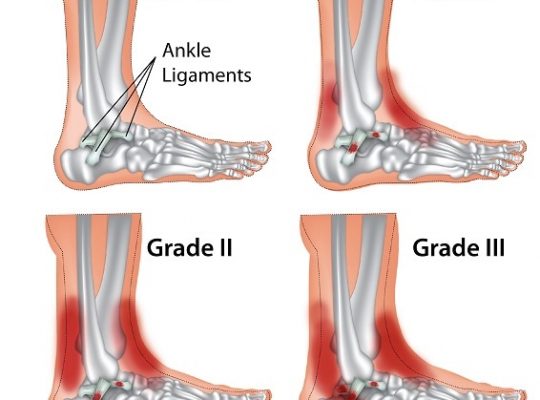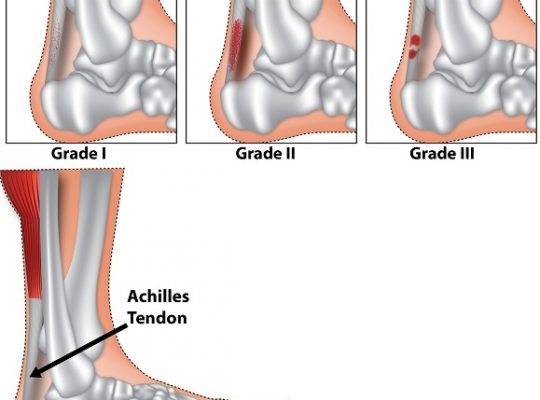RICE is a mnemonic for the treatment of most sports injuries. It stands for rest, ice, compression, and elevation. It is generally an accepted method for treating inflammation after trauma. R.I.C.E was first introduced by Gabe Mirkin in 1978 and is considered a first aid treatment but not always to cure acute injuries. It aims to manage discomfort and internal bleeding. It is a first aid measure used to decrease pain, reduce healing time and prevent certain complications (e.g.: from swelling).
Rest
This is the first stage of the treatment and is required to decrease blood flow and stress on the injured tissues ]. General activity is allowed but any activity that strains the injured area should be avoided as it may compromise with the healing process. It is important especially during the first 24-48 hours after the injury. Some studies have proved that rest after an injury is required and activity should be avoided. It should be of limited duration and progressive activity is likely to restore strength and normal tissue structure.
Some studies have proved that rest after an injury is required and activity should be avoided. It should be of limited duration and progressive activity is likely to restore strength and normal tissue structure.
Ice
The second stage is used to limit the damage caused by the injury by reducing the temperature at the area involved. Decreasing the temperature causes constriction of the blood vessels and limits the amount of bleeding. It can also reduce pain levels as it increases the threshold level of nerve endings that are receptive to pain, slows impulse transmission between nerves and reduces muscle spasm.
Short periods of ice application have been used to decrease the pain, therefore enabling earlier and more aggressive rehabilitation exercises after injury. This combined use of cold therapy (can be achieved using whatever means; ice, cold pack etcetera) and exercise has previously been termed as cryokinetics. There has been evidence showing that the combination of exercise and ice is more effective than the application of ice alone.
Evidence also showed that intermittent ice applications of 10 minutes are found to be most effective at reducing tissue temperature to therapeutic levels. The intermittent icing is also more effective than continuous icing at reducing pain on activity.
Compression
This stage aids in stopping the bleeding and to reduce swelling. It is applied to limit the amount of swelling caused by the flow of fluid into the damaged tissues. Controlling the amount of fluid flowing into the injured tissues reduces the amount of inflammatory response of the body and therefore helps in healing. There is little research done on the role of compression and its rationale of being useful is from generally accepted assumptions.
Gentle compression should be done using an elastic bandage by wrapping the injured area and it should be snug and not too tight. Some swelling is inevitable but too much swelling results in loss of function and pain.
Elevation
This helps to increase the return of blood into the circulation via gravity and therefore reduces and limits swelling and other complications. It can be done by elevating the injured area above the level of the heart. Little research has been done on the role of elevation in injuries but has been theorized that it may aid in the reduction of swelling.
There are many variations of RICE but most of them have the same basic concepts with new additions into the RICE regimen. PRICE with the addition of protection (protection + RICE) recommends that bracing is recommended to prevent any further injury especially when it involves a joint.
POLICE is another variation that represents protection, optimal loading, ice, compression, and elevation. Optimal loading is an umbrella term that includes therapies such as physical therapy, exercise, and massage. It aims to promote optimal healing and prevent delays in returning to routine activities. Over-the-counter analgesics can also be taken to reduce the amount of pain.
Sources
[1] Andersson S, Fredin H, Lindberg H, Sanz´en L, Westlin N. Ibuprofen and compression bandage in the treatment of ankle sprains. Acta Orthopaedica Scandinavica. 1983; 54(2):322–325.
[2] Heere LP. Piroxicam in acute musculoskeletal disorders and sports injuries. American Journal of Medicine. 1988; 84(5A):50–55.
[3] Jarvinen TA, Jarvinen TL, Kaariainen M. Muscle injuries: optimizing recovery. Best practice & research. Clinical Rheumatology. 2007; 21(2):317-331.
[4] Van den Bekerom MPJ, Strujis PAA, Blankevoort L, Welling L, van Dijk N, Kerkhoffs GMMJ. What is the evidence for rest, ice, compression and elevation therapy in the treatment of ankle sprains in adults? Journal of Athletic Training. 2012; 47(4):435-443.
[5] Kerr KM, Daley L, Booth L, Stark J. PRICE guidelines: guidelines for the management of soft tissue (musculoskeletal) injury with protection, rest, ice, compression, elevation (PRICE) during the first 72 hours (ACPSM). Association of Chartered Physiotherapists in Sports and Exercise Medicine. 1998; 6:10–11.





